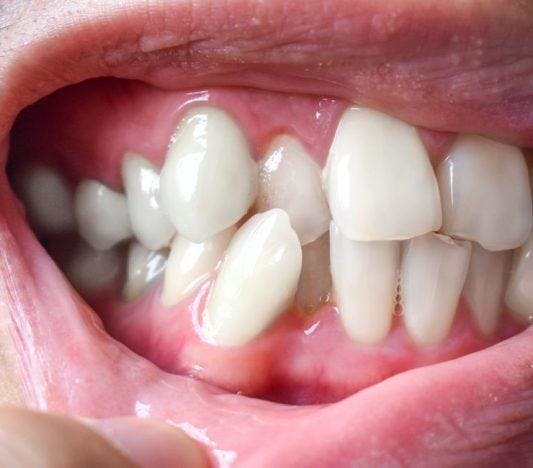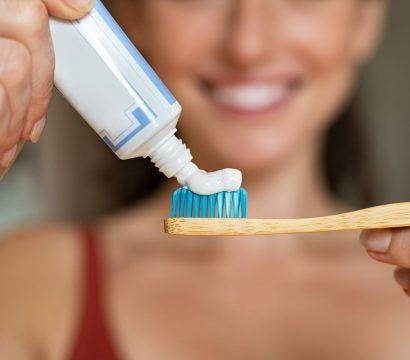If you have crowded teeth, you’re not alone. It’s a problem many people around the world face. In fact, according to the Journal of Orthodontic Science, overcrowding is the most common problem when it comes to teeth misalignment in patients worldwide.
Read on to know what the experts say. Find answers to burning questions around overcrowded teeth, the causes, and what you can do about them, including whether a tooth extraction is necessary. The good news, this isn’t always the case!
What are crowded teeth?
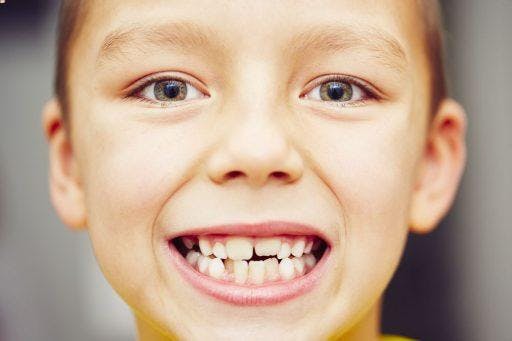
Dental crowding is when your teeth become too close for comfort that they overlap and protrude in abnormal angles. It’s a condition where teeth do not fit within your jaws because of a lack of space.
Overcrowding is easy to spot even for an untrained eye. Dental crowding can manifest as a displaced, twisted, or generally misaligned tooth. And it can affect both kids and adults in varying magnitudes.
Crowded teeth causes
According to the Australian Society of Orthodontists, in many cases of malocclusions, it comes down to genetics. Hereditary causes involve “jaws that are too small to accommodate a full set of teeth and misaligned jaws that did not form properly.” Ultimately, this mismatch between teeth size and jaw size is behind teeth crowding.
Certain behaviours also contribute to the misalignment, including thumb-sucking, tongue-thrusting, and improper dental care.
Other causes of overcrowding include:
- Premature tooth loss
- Over-retained baby teeth
- Extra adult teeth
Types of dental crowding
Dental crowding can manifest in various forms, depending on where and how the teeth are misaligned and overlapping. Here are the different types:
- Horizontal crowding: Teeth are compressed side-to-side, resulting in a lack of space horizontally.
- Vertical crowding: Teeth overlap top-to-bottom, creating vertical misalignment.
- Rotational crowding: Teeth twist around their axis, causing them to rotate out of their normal position.
- Posterior crowding: The back teeth are misaligned or crowded.
- Anterior crowding: The front teeth overlap or are misaligned.
- Combined crowding: More than one type of crowding is present, like a combination of horizontal and rotational misalignments.
Levels of dental crowding
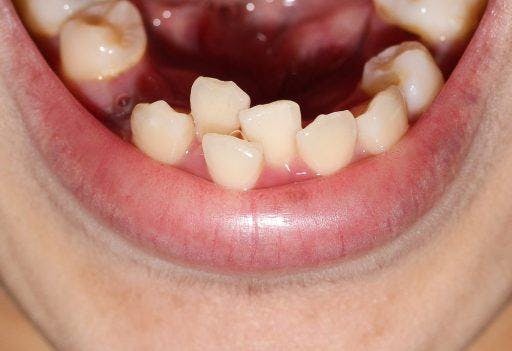
Oral health care providers classify teeth crowding according to the severity of the condition. They also measure the discrepancy between the widths of the jaws and the rows of teeth to determine the condition’s grouping.
There are three levels, as explained in the Journal of Orthodontic Science:
- Mild crowding: The space discrepancy is within 1-3 mm.
- Moderate crowding: The space discrepancy falls within 4-6 mm.
- Severe crowding: The space discrepancy is more than 6 mm.
Wondering if you have crowded teeth? The easiest way to spot overcrowding is to face the mirror and check the arrangement of your teeth. See if any teeth overlap or are simply out of position. You can also take an online smile assessment. Then, consult your dentist for a more definitive diagnosis.
Does teeth crowding get worse as you age?
It’s possible. Crowding can worsen as you age because of several factors:
- Wisdom teeth
- Jaw bone density
- Changes in mouth shape
Oral health risks of crowded teeth
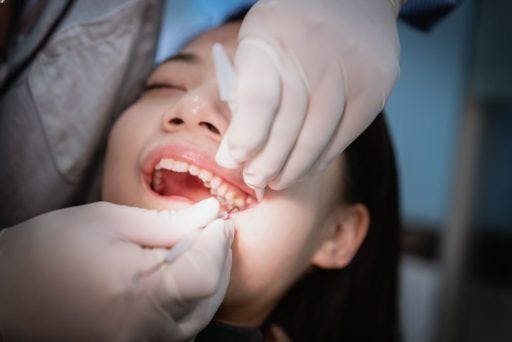
Is managing teeth crowding as simple as taking a painkiller and sleeping it off? Of course not! Instead, ask your dentist about the most appropriate treatment for your circumstance.
Also, don’t dismiss overcrowding as a mere aesthetic concern. The condition contributes to the breakdown of dental health over time. Overcrowded teeth are more difficult to clean and can cause biting, chewing, and speaking difficulties.
A study published by IOPscience also confirms that crowding poses a challenge in maintaining proper oral hygiene through brushing. Because of the tight spaces between the teeth, removing food debris becomes difficult, therefore increasing the chances of these dental concerns:
- Plaque accumulation
- Calculus formation
- Dental caries
- Gingivitis and periodontal disease
- Tooth mobility
Can braces fix crowded teeth?
A timely treatment plan is necessary to reduce the risks of overcrowding. The most common solution involves traditional braces, which fix alignment by applying pressure on the teeth. These metal brackets are suitable for younger patients and mild to moderate cases. But they’re not the only choice.
How to fix crowded teeth
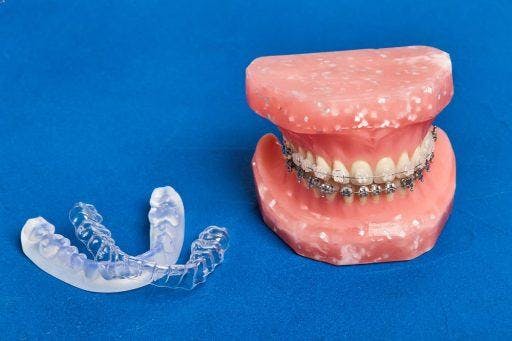
Your dentist will recommend the most appropriate therapy depending on the magnitude of the crowding. Some possible options:
- Clear aligners – invisible trays, like ClearCorrect, which move teeth to their proper positions discreetly and comfortably.
- Permanent or removable dental plates – plastic devices that use wires and springs to correct teeth alignment.
- Palatal expanders – a tool that helps widen the upper jaw of children and adolescents.
- Lingual braces – orthodontic appliances attached inside the surface of the teeth.
When is extraction necessary?
Now, when does extraction enter the equation? According to a study by The Angle Orthodontist, “cases of severe crowding may require more extensive therapy with tooth extractions.” The procedure will help create space for proper alignment, establish a stable bite, and eliminate unnecessary teeth.
Sometimes, extraction is necessary before orthodontic treatment because of decayed and damaged teeth. Your dentist might also recommend it for safer, straighter, and long-lasting results. Or, at times, they’ll suggest it after wearing braces or aligners to avoid relapse.
Ultimately, the decision to remove teeth depends on your condition and your willingness to undergo the procedure. Don’t worry; you have plenty of options available. Your dentist will consider other solutions first before concluding that extraction is necessary to fix your crowded teeth.
References:
Alqutub, A. W. (2021). Pain Experience after Dental Implant Placement Compared to Tooth Extraction. International Journal of Dentistry, 2021, 1–5.
Australia, O. (2023, March 8). Dental crowding: causes and treatment options. Orthodontics Australia.
Bahirrah, S. (2018b). Relationship of crowded teeth and Oral Hygiene among urban population in Medan. IOP Conference Series, 126, 012188.
Cardoso, C. a. L., Valerio, C. S., De Carvalho Carmelo, J., Rodrigues, L. G., Silva, A. I. V., & Manzi, F. R. (2022). Impact of orthodontic correction of dental crowding with pre-molar extraction in the anterior mandible evaluated by cone-beam computed tomography. Journal of Orthodontic Science, 11(1), 47.
Crowded Teeth. (n.d.). Straumann.
Department of Health & Human Services. (n.d.-c). Orthodontic treatment. Better Health Channel.
Filho, H. L., Maia, L. H. E. G., Lau, T. C. L., De Souza, M. M. G., & Maia, L. C. (2014). Early vs late orthodontic treatment of tooth crowding by first premolar extraction: A systematic review. Angle Orthodontist, 85(3), 510–517.
Jadidi, L. A., Sabrish, S., Shivamurthy, P. G., & Senguttuvan, V. (2018). The prevalence of malocclusion and orthodontic treatment need in Omani adolescent population. Journal of Orthodontic Science, 7(1), 21.
Peck, S. (2017). Extractions, retention and stability: the search for orthodontic truth. European Journal of Orthodontics, 39(2), 109–115.
Turner, S., Harrison, J. E., Sharif, F. N. J., Owens, D., & Millett, D. T. (2021). Orthodontic treatment for crowded teeth in children. The Cochrane Library, 2022(1).
Why are my child’s teeth crooked? – Australian Society of Orthodontists. (n.d.).
